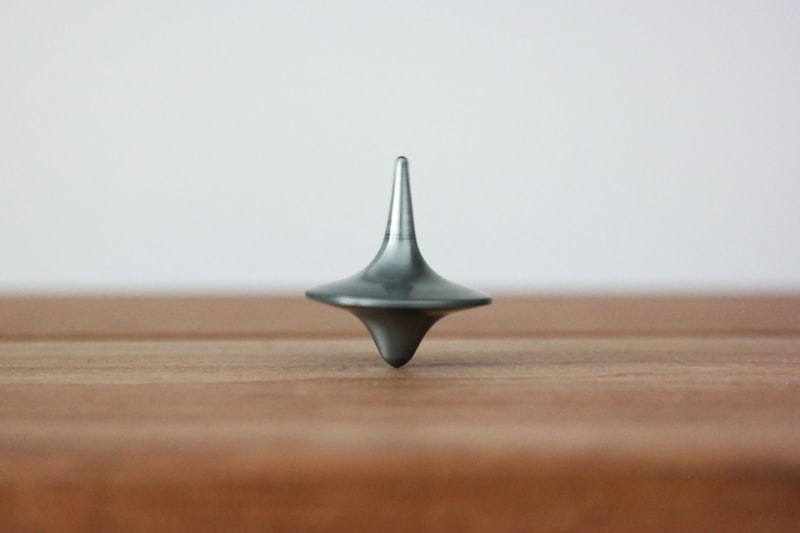One effective technique is setting clear boundaries. Imagine your work and personal life as two separate rooms in your house. When you’re in the “work” room, focus solely on work tasks. Resist the temptation to peek into the “personal” room by checking emails or taking work calls. Similarly, when you’re in the “personal” room, avoid work-related activities. This mental separation helps maintain a healthy distinction between the two domains.
Prioritization is another crucial strategy. Just like tackling the most important tasks first at work, prioritize activities in your personal life that bring you joy and fulfillment. This could mean scheduling regular exercise, family time, or pursuing hobbies you love. By consciously allocating time to these priorities, you ensure they don’t get overshadowed by work demands.
Effective time management is key. Think of your time as a valuable currency that you need to budget wisely. Use productivity techniques like the Pomodoro Technique or time blocking to maximize your work hours. When you’re more productive during work hours, you’ll find it easier to switch off and enjoy your personal time guilt-free.
Learn to say “no” when necessary. It’s tempting to say yes to every work assignment or social invitation, but overcommitting can lead to burnout. Assess your priorities and commitments realistically before taking on additional tasks. Remember, saying no to one thing often means saying yes to something more important – like your mental health and well-being.
Lastly, don’t forget to unplug and recharge regularly. Just as your phone needs to be recharged to function optimally, so do you. Schedule regular breaks throughout your day and take vacations when possible. Disconnecting from work allows you to come back refreshed and more productive.
Mastering Harmony: 10 Expert Techniques for Work-Life Balance
-
Prioritize Your Tasks: Just like a chef prepares ingredients before cooking, prioritize your tasks each day. Identify the most critical tasks for work and personal life, ensuring you allocate time to what truly matters.
-
Set Boundaries: Imagine your time as a valuable currency. Setting boundaries means knowing when to say no to work requests that encroach on personal time and vice versa. It’s about respecting your own time and commitments.
-
Learn to Delegate: In any team, each member plays a unique role. Similarly, delegate tasks both at work and home. It lightens your load and allows others to contribute, fostering teamwork and efficiency.

Practice Time Management: Time is like a river; you can’t touch the same water twice. Learn effective time management techniques such as the Pomodoro Technique or time blocking to maximize productivity while leaving ample room for personal pursuits.
-
Embrace Flexibility: Just as a bamboo bends in the wind, embrace flexibility in your schedule. Life can be unpredictable, so having a flexible mindset helps you adapt to changes without losing your balance.
-
Make Time for Self-Care: You are the engine that drives your life’s train. Like a car needs regular maintenance, prioritize self-care activities such as exercise, hobbies, or simply relaxation to rejuvenate your mind and body.
-
Disconnect Regularly: Imagine your mind as a computer that needs a reset. Regularly disconnect from work emails and notifications during personal time to recharge and prevent burnout.
-
Communicate Effectively: Communication is the key to any successful relationship. Whether at work or with family, communicate your needs clearly and listen actively to others’ concerns to foster understanding and harmony.
-
Set Realistic Goals: Just as a mountaineer plans each step up a mountain, set realistic goals for both your career and personal life. Break larger goals into smaller, achievable tasks to maintain motivation and celebrate each milestone.
-
Reflect and Adjust: Like a pilot adjusts the course of a plane mid-flight, regularly reflect on your work-life balance. Identify what’s working and what needs adjustment, then make changes accordingly to stay on course towards a harmonious life.

Balancing work and personal life isn’t a one-time achievement but an ongoing journey. By applying these expert techniques consistently, you can create a symphony of harmony where work and personal life complement each other, resulting in a more fulfilling and satisfying lifestyle.
The Art of Juggling: Proven Strategies for Managing Work and Life
Firstly, prioritize like a pro. Imagine your to-dos as juggling balls. Some are made of glass (urgent tasks), while others are rubber (less urgent). Start with the glass ones—they need your immediate attention to avoid shattering. Then, focus on the rubber balls, which can bounce back if temporarily dropped. This method ensures you handle crucial work tasks promptly without neglecting personal time.
Next, establish boundaries as clear as circus lines. Define specific times for work and stick to them. Just as a juggler needs a clear stage, you need defined work hours to concentrate fully and efficiently. Similarly, outside these hours, ensure you disconnect from work emails and calls—this personal time is your opportunity to recharge and invest in relationships or hobbies that rejuvenate you.
Moreover, learn the art of saying ‘no’. Jugglers don’t try to juggle everything thrown at them; they select their props carefully. Similarly, assess requests and commitments before accepting them. Saying ‘no’ graciously when your plate is full is crucial for maintaining balance and avoiding burnout.
Additionally, embrace flexibility like a seasoned performer. Unexpected gusts of wind can disrupt even the best juggler’s routine. Similarly, be adaptable when life throws curveballs. Flexibility allows you to adjust your schedule or priorities without losing your balance.
Lastly, invest in self-care as diligently as a juggler practices. Just as juggling requires stamina and focus, managing work and life demands a healthy mind and body. Prioritize sleep, exercise, and nutrition—they are the backbone of your performance in both arenas.
Mastering the art of juggling work and life isn’t about handling everything at once but about skillfully managing your time, setting boundaries, and prioritizing self-care. With practice and these proven strategies, you can achieve harmony and excel both personally and professionally. Ready to step into the ring of life’s circus?
Balance in Motion: Innovative Methods to Achieve Work-Life Equilibrium
One of the key strategies is mastering the art of time management. Think of your time as a precious resource that needs to be budgeted wisely. Start by identifying your priorities both at work and in your personal life. Are there tasks that can be delegated or automated to free up more time for things that matter most to you? By learning to say no to non-essential tasks and setting realistic goals, you can regain control over your schedule.
Another effective approach is adopting a flexible work arrangement. Thanks to advancements in technology, many companies now offer options such as remote work or flexible hours. This allows employees to tailor their work schedules around personal commitments, whether it’s attending a child’s school play or hitting the gym during off-peak hours. By finding a schedule that aligns with your natural rhythms and personal obligations, you can optimize both productivity and happiness.
Additionally, nurturing your mental and physical well-being is crucial for maintaining equilibrium. Just as you would invest time in a project at work, prioritize self-care activities such as exercise, meditation, or spending quality time with loved ones. These activities not only recharge your batteries but also contribute to a more positive mindset and increased resilience in the face of challenges.
Lastly, don’t underestimate the power of boundaries. Establishing clear boundaries between work and personal life helps prevent burnout and fosters a healthier relationship with both aspects of your life. Whether it’s designating a specific workspace at home or setting technology-free zones during family meals, creating these boundaries reinforces the importance of maintaining equilibrium.
Achieving work-life balance is an ongoing journey that requires intention and adaptation. By implementing these innovative methods tailored to your unique circumstances, you can cultivate a more harmonious and fulfilling life where both work and personal aspirations thrive in harmony.
From Chaos to Calm: Effective Techniques for Balancing Career and Personal Life
Firstly, setting clear boundaries is crucial. Just as a fence delineates property lines, boundaries define when work begins and ends, and when personal time begins. This might mean scheduling work hours strictly and resisting the temptation to check emails during dinner. By clearly separating these domains, you create mental space for each without them intruding on one another.

Moreover, learning to prioritize is a skill worth mastering. Imagine your tasks as ingredients for a gourmet meal—you wouldn’t throw everything into the pot at once! Similarly, prioritize tasks based on their importance and deadlines. This ensures that you focus on what truly matters both at work and in your personal life, preventing burnout and fostering a sense of accomplishment.
Another effective technique is the power of delegation. Just as a conductor leads an orchestra, delegating tasks allows you to orchestrate your responsibilities efficiently. Identify tasks that others can handle and delegate them accordingly. This not only lightens your workload but also cultivates a sense of teamwork, both at work and at home.
Furthermore, embrace the magic of “me-time”. Think of yourself as a smartphone—periodic recharging is essential to keep functioning optimally. Dedicate time solely for activities that recharge your batteries, whether it’s reading a book, exercising, or pursuing a hobby. This rejuvenation will enhance your productivity and bring a sense of calm to your hectic schedule.
Frequently Asked Questions
What are some practical tips for reducing stress and maintaining balance
Learn practical tips for reducing stress and maintaining balance with these actionable strategies. Discover effective ways to manage stress through relaxation techniques, time management, exercise, and fostering positive relationships. Implementing these tips can help you achieve a healthier balance in your life.
How can I set boundaries between work and personal life
Learn effective strategies to set clear boundaries between work and personal life, ensuring better balance and productivity.
What are effective time management strategies for achieving work-life balance
Discover effective time management strategies to achieve work-life balance. Learn practical techniques to prioritize tasks, set boundaries, and allocate time for personal and professional activities, enhancing productivity and well-being.
How do flexible work arrangements contribute to work-life balance
Learn how flexible work arrangements enhance work-life balance by allowing employees to manage their schedules, reducing stress, and fostering better productivity and satisfaction.
What role does self-care play in achieving a healthy work-life balance
Self-care is essential for achieving a healthy work-life balance by promoting physical, mental, and emotional well-being. Prioritizing self-care helps manage stress, enhances productivity, and fosters overall satisfaction in both personal and professional life.


